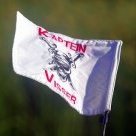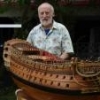
Bob Legge
Members-
Posts
71 -
Joined
-
Last visited
Profile Information
-
Gender
Male
-
Location
Perh, Australia
Recent Profile Visitors
-
 Canute reacted to a post in a topic:
Looking for plans or possible models of Magellan's ships.
Canute reacted to a post in a topic:
Looking for plans or possible models of Magellan's ships.
-
 Harvey Golden reacted to a post in a topic:
Looking for plans or possible models of Magellan's ships.
Harvey Golden reacted to a post in a topic:
Looking for plans or possible models of Magellan's ships.
-
 Bob Legge reacted to a post in a topic:
BOOK Lectures on Naval Architecture, being the Substance of those delivered at the United Service Institution
Bob Legge reacted to a post in a topic:
BOOK Lectures on Naval Architecture, being the Substance of those delivered at the United Service Institution
-
 mtaylor reacted to a post in a topic:
Looking for plans or possible models of Magellan's ships.
mtaylor reacted to a post in a topic:
Looking for plans or possible models of Magellan's ships.
-
Looking for plans or possible models of Magellan's ships.
Bob Legge replied to J11's topic in Nautical/Naval History
For Gilberto Penzo's book Google Type gilberto penzo select gilberto penzo shop from list SELECT Gilberto Penzo - Venetian Boats and Ships Select Go Online The book is still available and the plans can be perused. Bob. -
 Bob Legge reacted to a post in a topic:
Archaeological Evidence for the Development of RN Gunnery
Bob Legge reacted to a post in a topic:
Archaeological Evidence for the Development of RN Gunnery
-
 mtaylor reacted to a post in a topic:
Dimensions of the Royal Navy Ships of War. 1695year. Document from Russia
mtaylor reacted to a post in a topic:
Dimensions of the Royal Navy Ships of War. 1695year. Document from Russia
-
 Bob Legge reacted to a post in a topic:
Mathew Baker's early concept of ship hull design, ca. 1570
Bob Legge reacted to a post in a topic:
Mathew Baker's early concept of ship hull design, ca. 1570
-
 Bob Legge reacted to a post in a topic:
Mathew Baker's early concept of ship hull design, ca. 1570
Bob Legge reacted to a post in a topic:
Mathew Baker's early concept of ship hull design, ca. 1570
-
 Bob Legge reacted to a post in a topic:
Mathew Baker's early concept of ship hull design, ca. 1570
Bob Legge reacted to a post in a topic:
Mathew Baker's early concept of ship hull design, ca. 1570
-
 Bob Legge reacted to a post in a topic:
Mathew Baker's early concept of ship hull design, ca. 1570
Bob Legge reacted to a post in a topic:
Mathew Baker's early concept of ship hull design, ca. 1570
-
 Bob Legge reacted to a post in a topic:
Mathew Baker's early concept of ship hull design, ca. 1570
Bob Legge reacted to a post in a topic:
Mathew Baker's early concept of ship hull design, ca. 1570
-
 Bob Legge reacted to a post in a topic:
Mathew Baker's early concept of ship hull design, ca. 1570
Bob Legge reacted to a post in a topic:
Mathew Baker's early concept of ship hull design, ca. 1570
-
 EricWilliamMarshall reacted to a post in a topic:
La Belle Poule 1765 by mtaylor - Scale 1:64 - POB - French Frigate from ANCRE plans
EricWilliamMarshall reacted to a post in a topic:
La Belle Poule 1765 by mtaylor - Scale 1:64 - POB - French Frigate from ANCRE plans
-
 EricWilliamMarshall reacted to a post in a topic:
La Créole 1827 by archjofo - Scale 1/48 - French corvette
EricWilliamMarshall reacted to a post in a topic:
La Créole 1827 by archjofo - Scale 1/48 - French corvette
-
 mtaylor reacted to a post in a topic:
WRITER’S BOAT MODELS
mtaylor reacted to a post in a topic:
WRITER’S BOAT MODELS
-
Slocum's SPRAY: I remembered this article https://www.boatdesign.net/threads/slocum-s-spray.30617/page-26 and https://en.wikipedia.org/wiki/Sailing_Alone_Around_the_World See Reference link. Bob
-
There is a plan in the NMM. Belle Poule fl.1780 (French, captured) ZAZ3117 J6627 An image can be seen here: https://collections.rmg.co.uk/collections/objects/82908.html Sister Ships DÉDAIGNEUSE 1776, AMPHITRITE 1768, TOURTERELLE 1770 Also: Catalogue des Plans - Les Archives de la Marine 2030 Page 176 Frégate << La Belle Poule >>. << Construite à Bordeaux en 17.. par M GUIGNACE. L'Enphitrite & La Tourterelle ont pareillement été faites à Baux par le même ingénier .. Non signé ni daté [vers 1764]. Tracé des formes de la coque : pl. vertical. Encre noire. Dim. 0.53 x 0.40. 2G4.3, no 65 Regards, Bob.
-
Egyptian Oars and Vessel: Jenkins, Nancy, The Boat Beneath The pyramid (King Cheops' Royal Ship), 1980, Thames and Hudson Ltd., London, ISBN 0-03-057061-1 The reconstruction of a dismantled complete vessel which was found in a large covered stone pit at the base of the great Pyramid in 1954. Length 43.4 metres, beam 5.9 metres, depth (aft of midships) 1.78 metres, draught 1.48 metres. Bob
- 73 replies
-
- mediterranean
- galley
-
(and 1 more)
Tagged with:
-
I Like your books. Especially Witsen, Tasman Ships and Dutch Merchant ships (Text and plans). Regards, Bob.
-
Rigging sizes Noel C L Hackney in HMS Victory Classic Ships No 1 by Airfix, 1970 gives a variation on method of calculating sizes (counting rather than measuring). He made marks on a pencil 1 inch apart. He then wound the line around the pencil, counting the number of turns to fill 1 inch. Calculating back (or using a small spreadsheet) gives the circumference. His results as printed for Airfix Victory - Scale 173 Thread or line size TPI Rope size (inches) Scale 173 12 lb 3-strand nylon salmon line 38 14 No 12 Super Gimp 40 13 1/2 No 50 synthetic 60 9 No 24 merc cotton/No 70 synthetic 70 7 1/2 No 90 synthetic 80 7 No 16 waxed 85 6 1/2 No 24 waxed / No 36 merc cotton 90 6 No 40 merc cotton 100 5 1/2 No 110 synthetic 104 5 1/4 No 120 synthetic/No 120 spun tereline 110 5 No 60 soft cotton 115 4 3/4 No 140 synthetic/75 denier teryline 120 4 1/2 Monofilament nylon fishing line 0.2 mm 4 Monofilament nylon fishing line 0.175 mm 3 1/2 Monofilament nylon fishing line 0.15 mm 3 Monofilament nylon fishing line 0.1 mm 2 He first states "the diameter of threads ... is not related to the thread number shown on the reel except in the most general way. That number is simply the count of how many hanks of that thread of a given length are needed to total a given standard weight, and it therefore follows that two threads of the same number can differ considerally in thickness if their basic material (cotton/man made fibre) of their treatment (waxed / mercerised) makes a variation in their weight per yard. Thus the standard No 40 cotton, No24 waxed thread and No 110 synthetic are almost the same thickness". Regards, Bob.
- 3,596 replies
-
- young america
- clipper
-
(and 1 more)
Tagged with:
-
The voyage pattern changes at different times of the year. One of the major concerns are the currents. They can assist or slow a vessel. See 9.42.02 Brazilian coast. The vessels follow the sailing directions below. The follow is from:Ocean Passages For The World; Third Edition 1973; Published by the Hydrographer of the Navy; NP136; To be obtained from the Agents for the Sale of Admiralty Charts. Taunton. This book and attached charts contains directions for Power Vessels, and Sailing Routes. These charts concern sailing vessels. Chart 5308 - World Sailing Ship Routes. Chart 5309 – Tracks followed by Sailing and Auxiliary Powered Vessels. Direction from the Book Page 149 9.44 From Canada and east coast of Untied States. 9.44.02. For Capetown and Good Hope. Having crossed the Equator as recommended, stand across the South-east Trade Wind on the port tack, even should the vessel fall off to about 260deg, for the wind will draw more to the E as the vessel advances, and finally due E at the S limit of the Trade. When in the vicinity of Penedos de Sao Pedro e Sao Pedro, frequent astronomical observations should be made, the current should be watched and allowed for, and a good lookout should be kept, as these rocks are steep-to and can only be seen on a clear day from a distance of about 8 miles. The same precautions are necessary, if passing westward of Ilha de Fernando de Noronha, when approaching the dangerous Atol das Rocas. On approaching the Brazilian coast between March and September, when the wind is from the SE and the current near the coast sets N, it will be better to keep from 120 to 150 miles off the land until well S, and steer so as to be windward of the port of destination; but from October to January, when the NE’ly winds prevail and the current sets SW, the coast may be approached with prudence, and a vessel may steer according to circumstances for her intended port. 9.44.03. For South American Ports, proceed as for Cape Town (9.44.02) as far as 5deg S, and then follow the directions given in articles 9.07.04 to 9.08.02, as required by the destination. Page 141 9.07.04 From the Equator southward. (not copied) 9.08.02. Rounding Cabo de Hornos westbound (not copied) Page 229 11.129 Cabo de Hornos to San Francisco and northward. For San Francisco, having rounded Cabo de Hornos as directed in 9.08.02, stand to the NW so as to cross the parallel of 50deg S between 80deg W, and 85deg W, and then due N to 30deg N. Thence keep off to the NW, running through the South-east Trades to cross the equator between 112deg W and 115deg W, being to the E, throughout the whole voyage from Cabo de Hornos, from September to November; and to the W from June to August. After crossing the equator, steer so as to cross the meridian of 120deg W in 13deg N to 15deg N, where the route divides into two branches, according to season. From November to February, make for 30deg N, 132deg W, and from that position, when the W’ly winds are met, curve gradually round towards San Francisco, making it to the N, and allowing for the current setting SE across the track. From March to October, make for 30deg N, 137deg W, and from that position, when the W’ly winds are reached at about 35deg N; again allowing for the SE-going current across the track. For Columbia River, Juan de Fuca Strait, or Prince Rupert, follow the routes given above as far as 30deg N; then continue to the NW, curving to the E on reaching, or nearing the parallel of 45deg N, to make destination, allowing for the current as above.
-
Swan class 3D model in progress
Bob Legge replied to dvm27's topic in CAD and 3D Modelling/Drafting Plans with Software
Great teaching tool, excellent work. Bob.- 104 replies
-
- pof swan series
- swan
-
(and 1 more)
Tagged with:
-
HMS Naiad 1797 by albert - FINISHED - 1/48
Bob Legge replied to albert's topic in - Build logs for subjects built 1751 - 1800
A beautiful model. Bob.
About us
Modelshipworld - Advancing Ship Modeling through Research
SSL Secured
Your security is important for us so this Website is SSL-Secured
NRG Mailing Address
Nautical Research Guild
237 South Lincoln Street
Westmont IL, 60559-1917
Model Ship World ® and the MSW logo are Registered Trademarks, and belong to the Nautical Research Guild (United States Patent and Trademark Office: No. 6,929,264 & No. 6,929,274, registered Dec. 20, 2022)
Helpful Links
About the NRG
If you enjoy building ship models that are historically accurate as well as beautiful, then The Nautical Research Guild (NRG) is just right for you.
The Guild is a non-profit educational organization whose mission is to “Advance Ship Modeling Through Research”. We provide support to our members in their efforts to raise the quality of their model ships.
The Nautical Research Guild has published our world-renowned quarterly magazine, The Nautical Research Journal, since 1955. The pages of the Journal are full of articles by accomplished ship modelers who show you how they create those exquisite details on their models, and by maritime historians who show you the correct details to build. The Journal is available in both print and digital editions. Go to the NRG web site (www.thenrg.org) to download a complimentary digital copy of the Journal. The NRG also publishes plan sets, books and compilations of back issues of the Journal and the former Ships in Scale and Model Ship Builder magazines.



